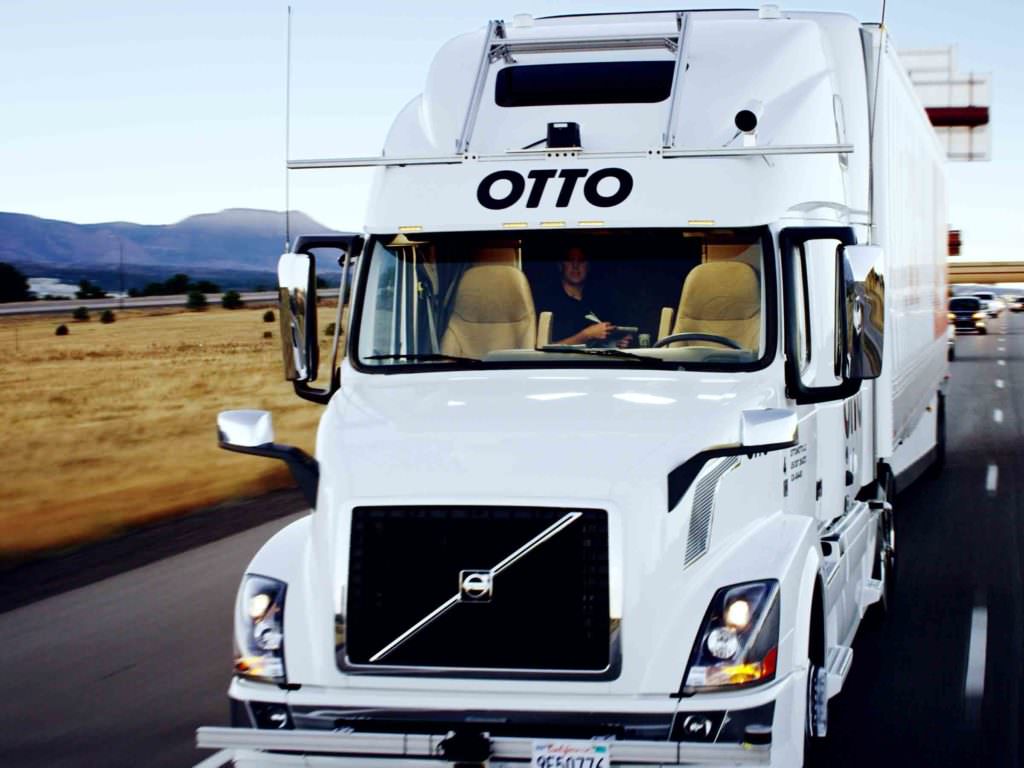Uber’s Self-Driving Truck Makes Its First Delivery: 50,000 Beers
WALT MARTIN IS kneeling, legs folded behind him, butt resting on his heels. “I’ve got to practice my yoga,” he says, clearly joking. Never mind that we’re in the cab of an 18-wheeler cruising through Colorado at 55 mph and Martin was, until a moment ago, the guy at the wheel.
Maybe he was feeling cocky. After all the truck, outfitted with $30,000 worth of hardware and software from San Francisco startup Otto, had just hours before made the world’s first autonomous truck delivery. You’d think so momentous an occasion would have involved something more glamorous than 50,000 cans of Budweiser, but there it is.
The drive was as mundane as the beer in the trailer. At 12:30 am, after leaving the brewery in Fort Collins and merging onto Interstate 25, an Otto driver punched a switch labeled “engage,” and, once sure autonomous mode had, in fact, engaged, climbed out of his seat. He buckled the safety belt behind him, to keep the warning chime from driving him crazy as the truck trundled 120 miles south to Colorado Springs.
Don’t worry. Otto, which Uber bought last summer for roughly $680 million, doesn’t want to put Martin or anyone else out of work.
Its technology works only on the highway, where it doesn’t have to deal with tricky variables like jaywalking pedestrians, four-way stops, or kids on bicycles. It maintains a safe following distance, and changes lanes only when absolutely necessary.
And unlike Tesla’s Autopilot, Otto’s system offers true ‘Level 4’ autonomy. Once the rig hits the interstate, it is entirely capable of the job at hand, letting the human deal with paperwork, thumb her phone, or even catch a few Z’s.
“The technology is ready to start doing these commercial pilots,” says Otto co-founder Lior Ron. “Over the next couple of years, we’ll continue to develop the tech, so it’s actually ready to encounter every condition on the road.”
If he can nail that, Ron says he can make trucking a local profession. “You can imagine a future where those trucks are essentially a virtual train on a software rail, on the highway,” he says. He sees a day when trucks do their thing on the interstate, then stop at designated depots where humans drive the last few miles into town. Drivers, in effect, become harbor pilots, bringing the ship to port.
Read More here

